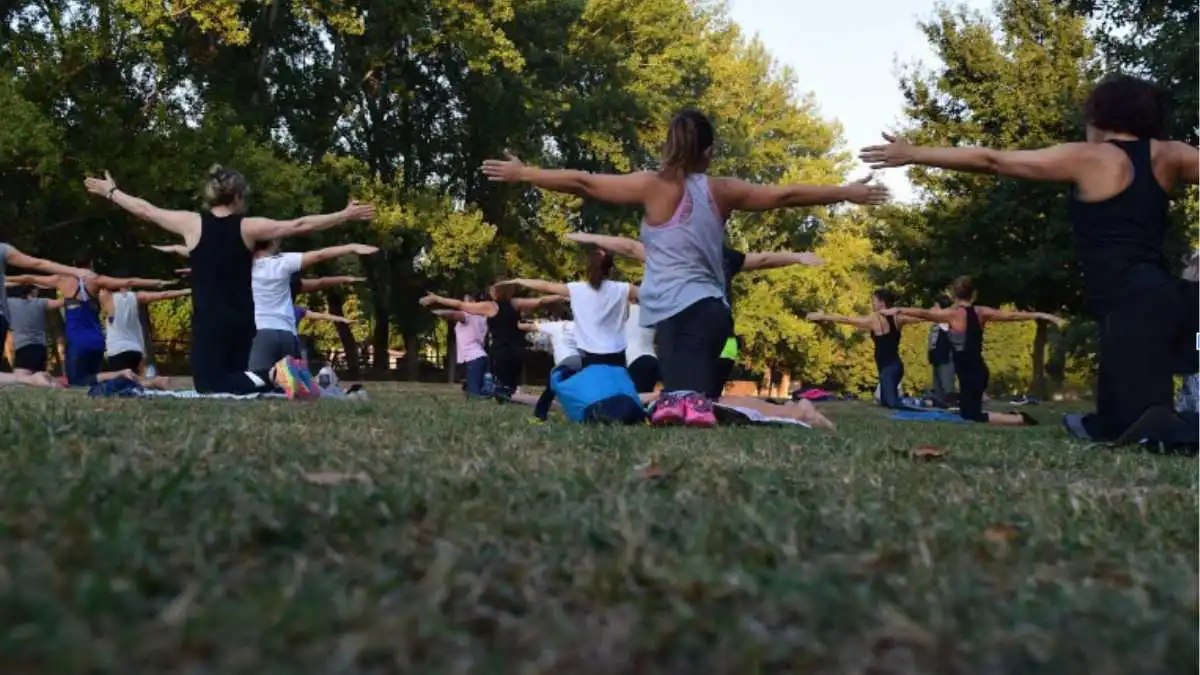HEALTH AND FITNESS
A College Student’s Guide to Yoga for Relaxation and Focus

Students often find themselves exhausted and sleep-deprived because of the heavy workload. Some of them have part-time jobs and need to combine studies with work. Others have busy schedules because of a great number of extracurricular activities and social commitments. When it’s impossible to change your schedule to make it less demanding, you need to find an outlet for your constant stress. Yoga can help you relax and renew your energy levels. It is a great choice for those who want to choose a healthier lifestyle and improve their psycho-emotional state.
By making yoga a part of your daily routine, you can effectively manage stress and enhance your academic performance. Oftentimes, through physical exercises, you give your brain an opportunity to relax and process information carefully. It helps you develop new ideas and come up with new solutions to existing problems. One of the most common difficulties that students experience is writing assignments with short deadlines. For instance, you can decide to look for essay writers for hire at CustomWritings instead of managing all of your assignments on your own. Having that extra time to rest might be quite crucial. Let’s explore the ways you, as a college student, can benefit from doing yoga.
Why Yoga Is Good for You
Yoga takes roots in the ancient Indian philosophy of Hinduism and emphasizes that mind, body, and spirit are interconnected. You might already know that this practice consists of physical postures (asanas), breathing exercises (pranayama), and meditation. So, what benefits will you get after incorporating yoga into your busy schedule? Here are some of them.
Stress reduction
It helps manage stress and anxiety through deep breathing and relaxation techniques. Combining poses like Downward-Facing Dog and Savasana with deep breathing can help calm your mind and allow you to forget about all the problems for some time.
Improved focus
Sometimes, you might need to concentrate on an assignment to ensure you avoid making mistakes. If you can’t do it and keep reacting to distractions around you, yoga can help you. Regularly practicing poses like Warrior II or Tree Pose improves concentration and mental clarity.
Better flexibility and strength
Yoga improves physical fitness and overall well-being. The best part is that you can do it anywhere and at any time. It also does not have to take hours of your time. Dedicate as much time as you can to this practice to see if it works for you.
Better sleep
Having a sound 8-hour sleep is crucial for any student. It can help you with that as well as it’s a great tool when it comes to combating insomnia. Just dedicate some time before you go to sleep to meditation and breathing exercises.
Boosted immune system
Finally, regular practice can strengthen the immune system and reduce the probability of various illnesses. Therefore, you won’t have to worry about missed classes and assignments piling up on your desk.
Incorporating Yoga into Your College Routine
Now that you know that fitting yoga into your schedule is worth the effort, let’s look at some tips to help you make it happen:
- Find a convenient time. The first thing you need to decide is when is the most convenient time for you to do yoga. You should aim to spend at least 10 minutes every day practicing it. It could be in the morning before classes, during a break, or in the evening.
- Create a dedicated space. Even a small corner of your room can be transformed into a peaceful yoga space. Buy a mat and consider having soothing music in the background during your practices.
- Join a yoga class or online resource. Remember that you don’t need to focus on solitude when doing yoga. You can attend a yoga class for guidance from experienced tutors and a sense of community. Many universities offer yoga classes, and there are countless online resources available.
- Start with short sessions. Don’t rush into the process. Begin with short sessions of 10-15 minutes and gradually increase the duration as you become more comfortable.
- Listen to your body. It’s important to avoid overexertion and modify poses to accommodate any physical limitations.
It is always a good idea to set realistic goals before you dive deep into the process of practicing yoga. For instance, one of such goals can be reducing stress. Define indicators that will show you the desirable progress. Also, try to experiment with different styles of yoga, such as Vinyasa, Hatha, and Iyengar, to find the one that resonates with you. It might not be your love at first sight, but you can explore its different dimensions to find the aspects that bring you energy and joy. Remember, yoga is a personal journey based on self-discovery. It’s essential to listen to your body and find what works best for you to get the best possible results.
-

 GENERAL6 months ago
GENERAL6 months agoChristofle – For Those Who Dream of Family Heirloom Silver
-

 SPORTS8 months ago
SPORTS8 months agoDiscover the World of Football with Streameast: Watch Your Favorite Leagues and Tournaments
-

 GENERAL4 months ago
GENERAL4 months agoUncovering the World of кинокрадко: The Dark Side of Film Piracy
-

 GENERAL2 months ago
GENERAL2 months agoATFBooru: Anime, Gaming, and Subculture Imageboard




























